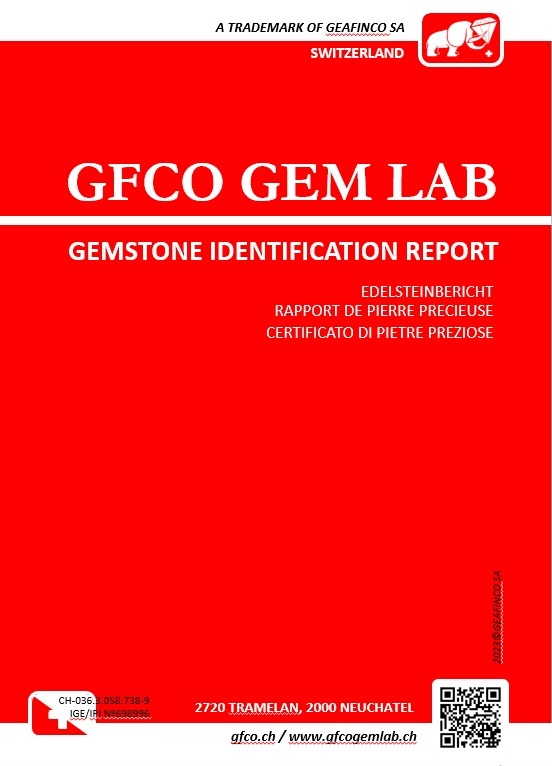GFCO GEM LAB is a Swiss gemological laboratory brand owned by the company Geafinco SA based in Tramelan (Switzerland). Our objective is to provide customers with quality services at competitive prices with a focus on microscope examination; the equipment used for testing as well as all important information regarding treatment for rubies, sapphires, fancy sapphires and emeralds feature in our reports. Professionalism, integrity and transparency are our core values.
"As people have personality, gemstones do too. Their appearance is function of many factors such as color, size, cutting, clarity, lighting conditions and influenced by the surrounding jewel if mounted. Their inclusions are of special interest for the gemologist, revealing much about them, and, by the landscapes drawn, take the observer in a voyage into another world." P.Cattoni, Director and Accredited Gemologist
STAR REPORT (15.4 x 22cm)
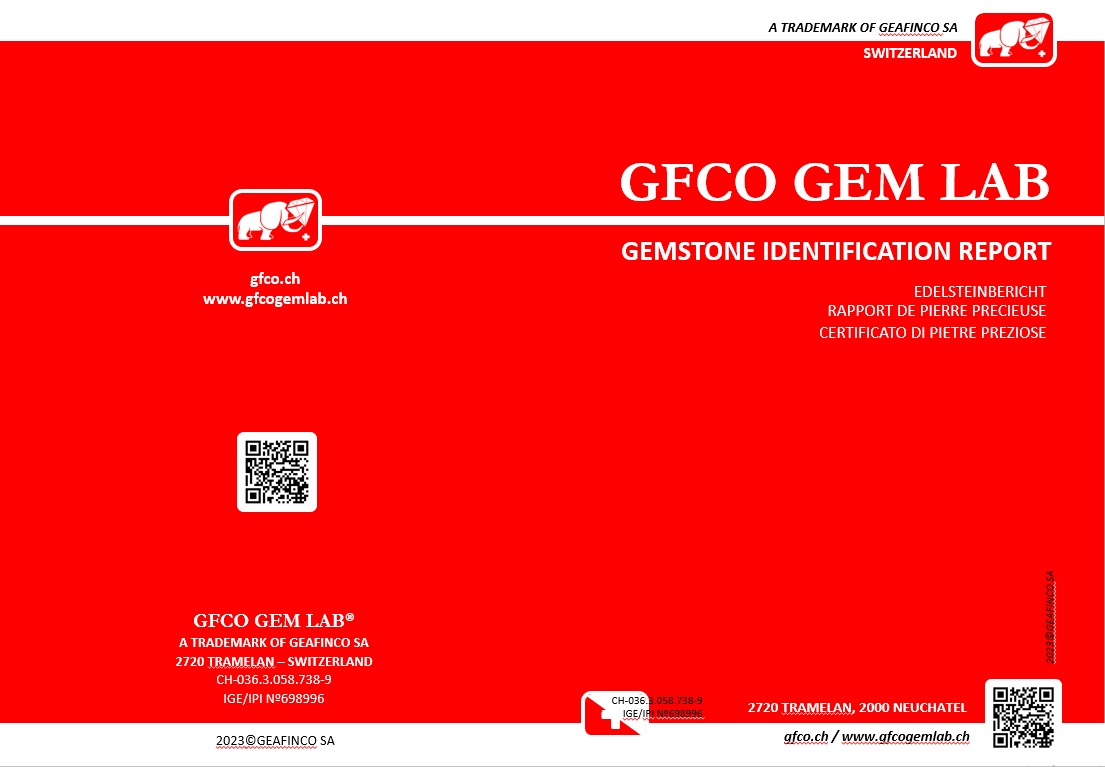
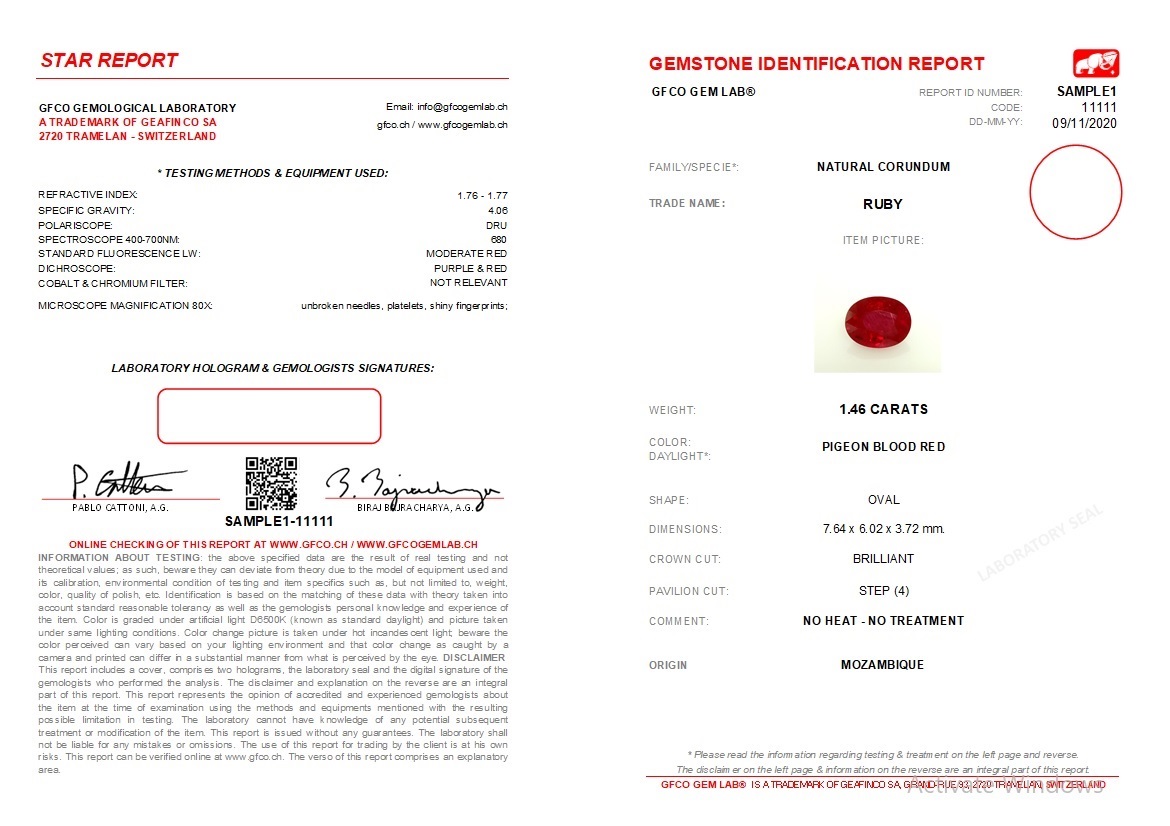

MEDIUM REPORT (7.8 x 10cm)
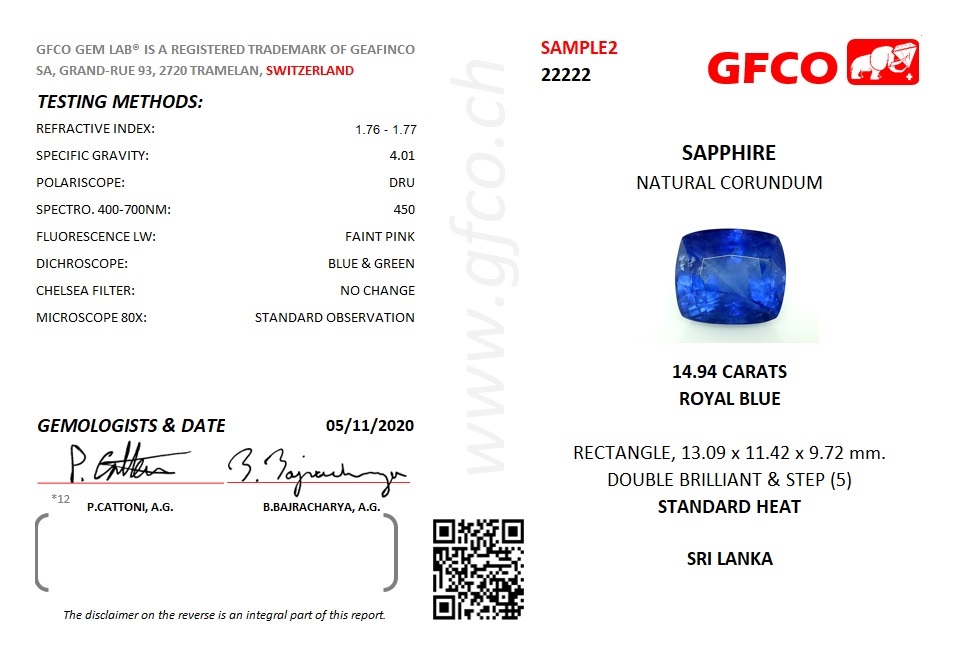

POCKET REPORT (9.25 x 6.25cm)
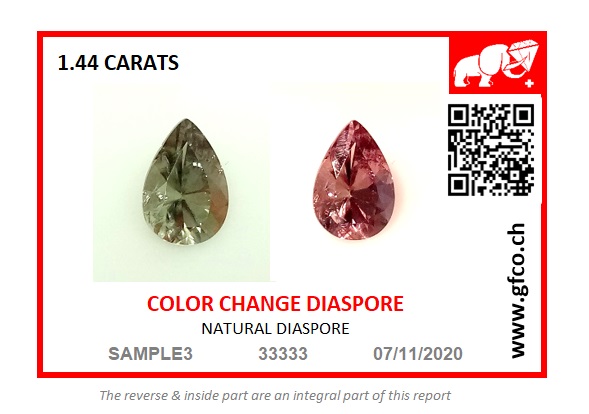

GRADER REPORT (15.4 x 22cm)

JEWELRY REPORT (15.4 x 22cm)
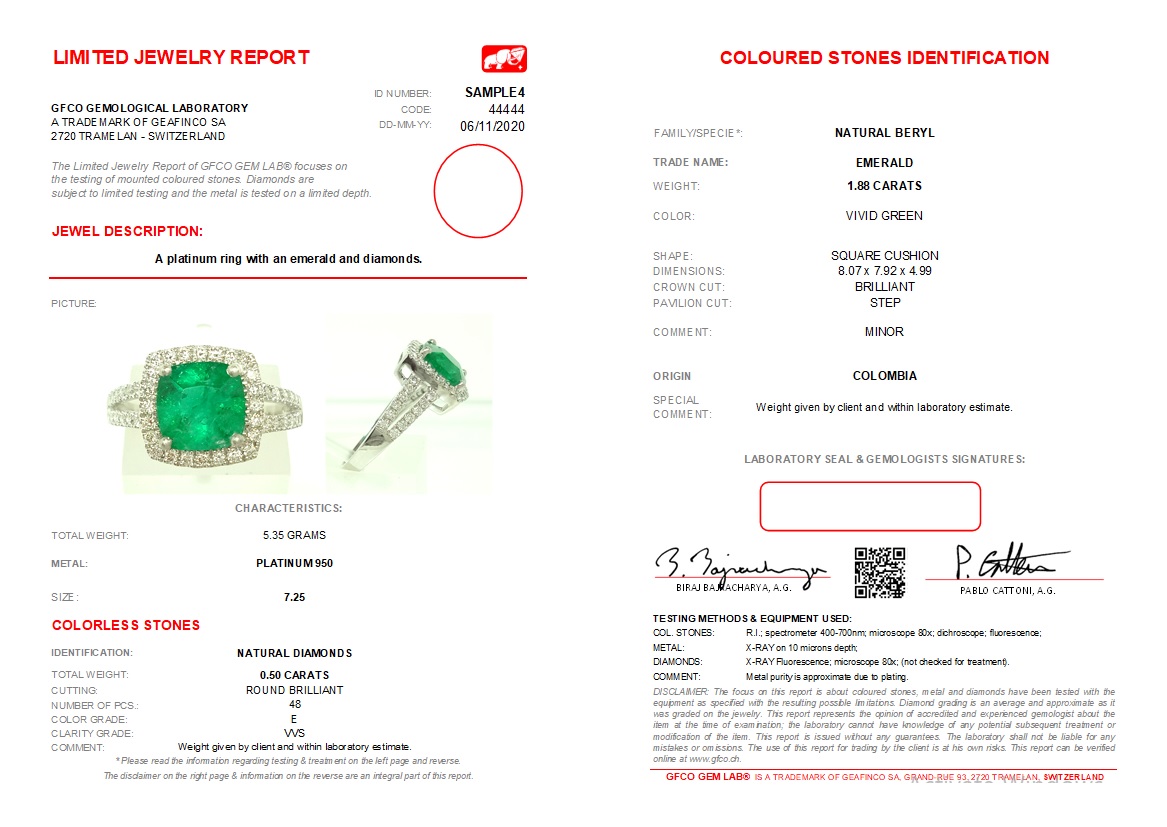
MEDIUM JEWELRY REPORT (7.8 x 10cm)
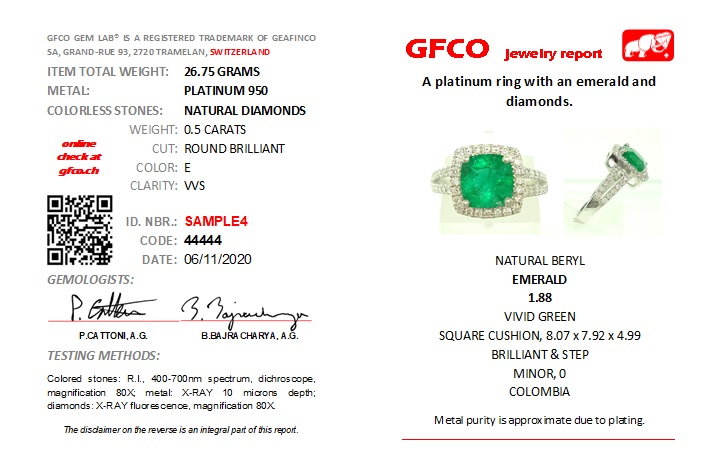
DIAMOND JEWELRY REPORT (15.4 x 22cm)

SEALED POCKET REPORT (9.25 x 6.25cm)

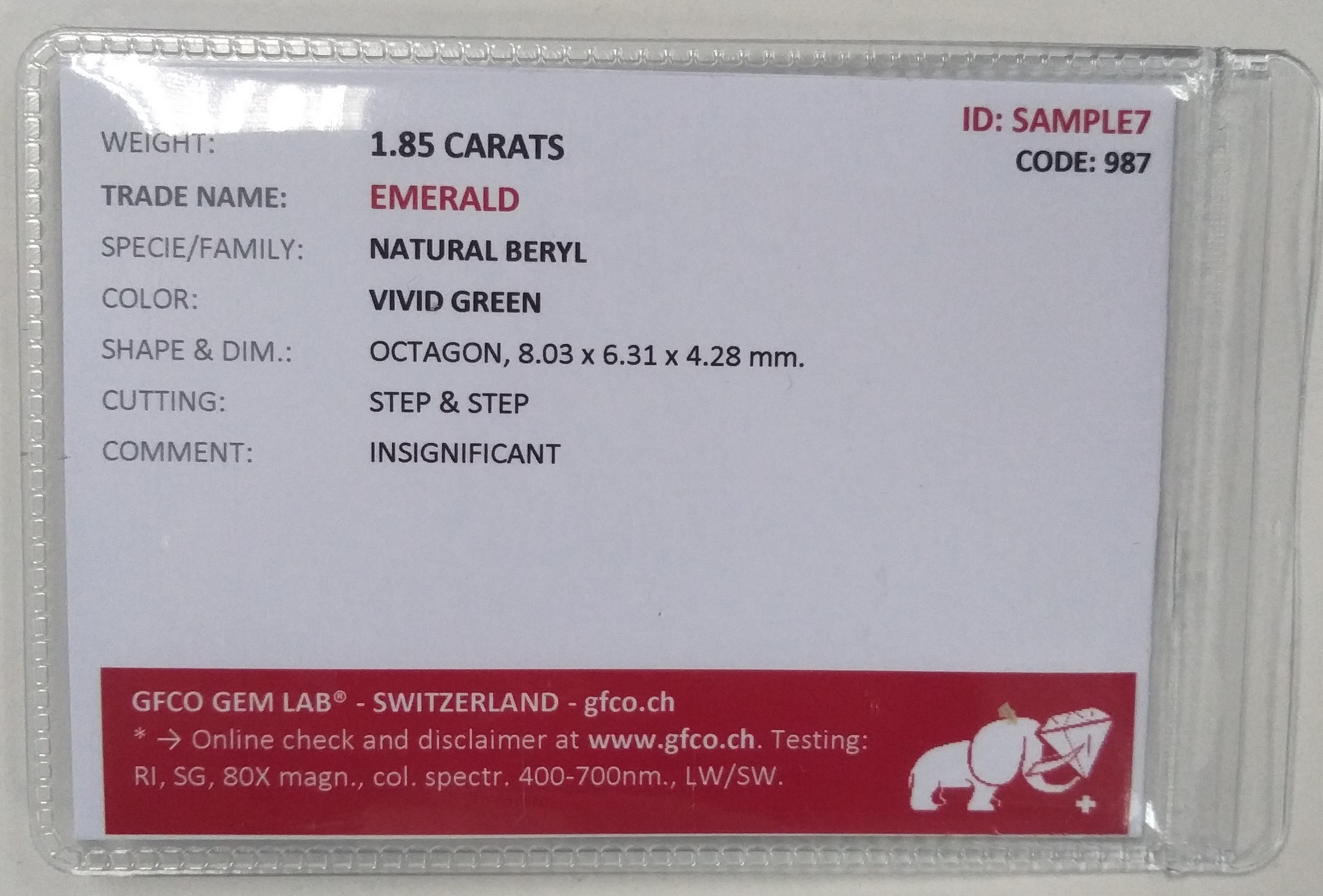
Do you have any questions? Feel free to contact us:
(support in English, French and German)

